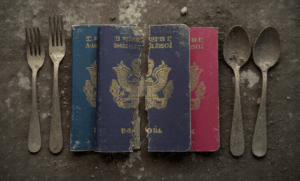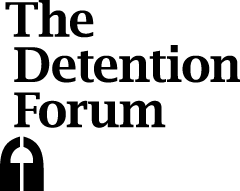Published in “The Observer” on Sunday 27 July 2025

The Israeli government is using the same method as many architects of calamity from the past 100 years
Gaza’s famine is man-made. And those who are making it happen are doing their best to conceal their crime. The Israeli government is reading from the same playbook as many architects of calamity from the past 100 years.
Step one: keep out the press
Two weeks ago, Europe and America marked the 40th anniversary of the Live Aid concert. Bob Geldof had been spurred to action when BBC television reporters Michael Buerk and Mohamed Amin filmed a devastating – and until then, hidden – famine. Ethiopia’s military regime barred journalists to avoid the embarrassment of the calamity, and because they were using food as a weapon of war.
No foreign journalists have been allowed into Gaza since 7 October 2023, except embedded in Israel Defense Forces units. Palestinian journalists report regularly, facing great danger and hardship. More than 170 have been killed and AFP is now considering withdrawing its journalists because it doesn’t want them to die of hunger.
Step two: ban the word ‘famine’
Faced with a famine in Bengal in 1943, Winston Churchill’s war cabinet forbade newspapers to use the words “famine” or “starvation” – until the editor of the Statesman newspaper got around the ban by publishing graphic photographs that needed no words of explanation. It was too late for an estimated three million who died in a preventable famine.
Israel – and its defenders in Washington – have objected to the word “famine”. In December last year, the US Famine Early Warning System network (FEWS NET) issued a report showing famine conditions in northern Gaza. For the first time in the organisation’s 40-year history, it was forced to retract the report. As with Bengal, the pictures have now broken through the cloud of denial.
Step three: confound the statisticians
FEWS NET and its cousin in the United Nations, the Integrated Food Security Phase Classification Mechanism (IPC), use three measures to test the severity of food crises – how much food people have access to, rates of child malnutrition, and death rates. It has five levels ranging from normal and “stressed”, through “crisis” and “emergency” to phase five: catastrophe or famine. To determine “famine” requires that all three indicators pass certain thresholds. That means if a government wants to prevent the UN from declaring “famine”, all it has to do is block data gathering.
Abiy Ahmed, the Ethiopian prime minister, did this at the height of the war against the Tigray region in 2021. He was imposing a tight starvation siege. The IPC’s Famine Review Committee published a report forecasting famine within three months if the war and blockade continued. The war and blockade continued, but Ethiopia expelled the IPC. When challenged, Ethiopia said there was no data for famine – and hence no famine. Israel has made it increasingly difficult to gather the data needed to show the true depths of hunger. The UN presence on the ground has been limited. The last IPC report made use of a telephone survey – but the poorest Palestinians often don’t have phones.
The IPC humanitarians can see famine, but their data can’t prove it—so they use every other word to describe how terrible the situation is. And Israel responds that there’s no famine.
Step four: attack the sources
The most-cited death toll in Gaza is the Ministry of Health’s count of 61,800. Israel – and others – routinely describe this as the “Hamas Ministry of Health”, implying that it can’t be trusted.
Expect the same story for the numbers of starvation deaths. Israel will accuse the UN of bias and antisemitism. But when we come to count the graves, we will probably find that its figures are an underestimate.
For every child whose death is recorded as “malnutrition”, there are usually many others who perished from illnesses such as respiratory infections or diarrhoea.
Step five: confuse the story
In every modern famine, it’s the poorest and most vulnerable who perish. The IPC uses 20% of families having no access to food as its threshold for IPC phase five, catastrophe or famine. Many of the others may have enough to eat.
That’s why the UN was serving 1.3 million hot meals per day to the most vulnerable and providing specialised therapeutic feeding, until Israel imposed a total blockade in March.
Israel will insist the Gaza Humanitarian Foundation (GHF) is providing enough rations for 2.1 million meals every day – one meal for every person in Gaza. How many are reaching the poorest 20%? How many are being eaten by members of armed gangs – or indeed by Hamas? The GHF isn’t a genuine or effective response to need – it’s an alibi for ongoing deprivation.
Step six: blame something or someone else
Most recent famines in Africa and the Middle East are caused by war. But governments prefer to blame the weather – and aid agencies have too often gone along with that story. It’s easier to raise money when you can blame hunger on an act of God. Israel can’t blame the weather, but it can blame Hamas, although there’s little evidence that it is stealing aid and causing famine.
If Israel were serious about preventing Hamas from stealing aid, it wouldn’t be running the GHF system – open to exactly this abuse – while stopping the UN from running its kitchens which serve hot food directly to children.
Step seven: justify the crime
Many Israeli advocates don’t deny that there’s famine – they say it’s not important. The argument is that Hamas and the Palestinians want to destroy Israel, and that justifies mass starvation.
The Israeli government knows what it is doing. The Israeli populace may be in denial, but its leaders have made a moral choice. We must see through their stratagems for concealment and confront them.
About the author: Alex de Waal is executive director of the World Peace Foundation, Tufts University, Massachusetts.
The opinions expressed in this blog are those of the authors and do not necessarily represent the views of United Against Inhumanity (UAI).











